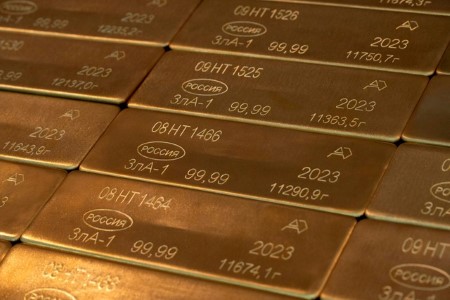




Monthly Economic Update: One for the road
 DOWNLOAD
DOWNLOAD

Inflation Update: Still low, still slow
 DOWNLOAD
DOWNLOAD

Philippines Trade Update: Exports momentum continues
 DOWNLOAD
DOWNLOAD


Gold holds steady as focus turns to US economic data

April 23 – Gold prices steadied on Tuesday after hitting a more than two-week low on diminishing fears about an escalation of tensions in the Middle East, with investors awaiting key economic data for further clarity on the timeline on US interest rate cuts.
Spot gold was little changed at USD 2,325.80 per ounce by 1:40 p.m. ET (1740 GMT) after earlier hitting its lowest since April 5. Bullion’s March to April rally drove it up by nearly USD 400 to an all-time high of USD 2,431.29 on April 12.
US gold futures settled 0.2% lower at USD 2,342.10.
Israeli strikes intensified across Gaza in some of the heaviest shelling in weeks, but with fears of a wider conflict receding after Iran said last week it had no plan to retaliate following an apparent Israeli drone attack, financial markets showed signs of sharper appetite for risk.
That has meant gold, traditionally seen as a haven from risk, has lost ground, said Julia Khandoshko, CEO at European broker Mind Money.
The market is also closely monitoring signals from the US, where inflation data and statements from the Federal Reserve indicate that interest rates may not be cut in June, Khandoshko said.
Recent remarks from Fed officials hinted at no urgency to cut rates, reducing the appeal of non-interest paying bullion. Traders now expect the first Fed rate cut to come most likely in September.
The market will keep a tab on US GDP data due on Thursday and the Personal Consumption Expenditures (PCE) print on Friday for more clues on the health of the economy and the timing of cuts.
Khandoshko added that overbought gold was also witnessing a technical correction.
“There are many investors who have missed out on the big rally in gold and will be looking to pick up dips like these,” said Fawad Razaqzada, market analyst at City Index.
Elsewhere, spot silver rose 0.4% to USD 27.29. Autocatalyst metal platinum dipped 0.5% to USD 912.75, while palladium gained 1.1% to USD 1,020.12.
(Reporting by Ashitha Shivaprasad in Bengaluru; Editing by Jan Harvey and Marguerita Choy)
This article originally appeared on reuters.com





 By Reuters
By Reuters